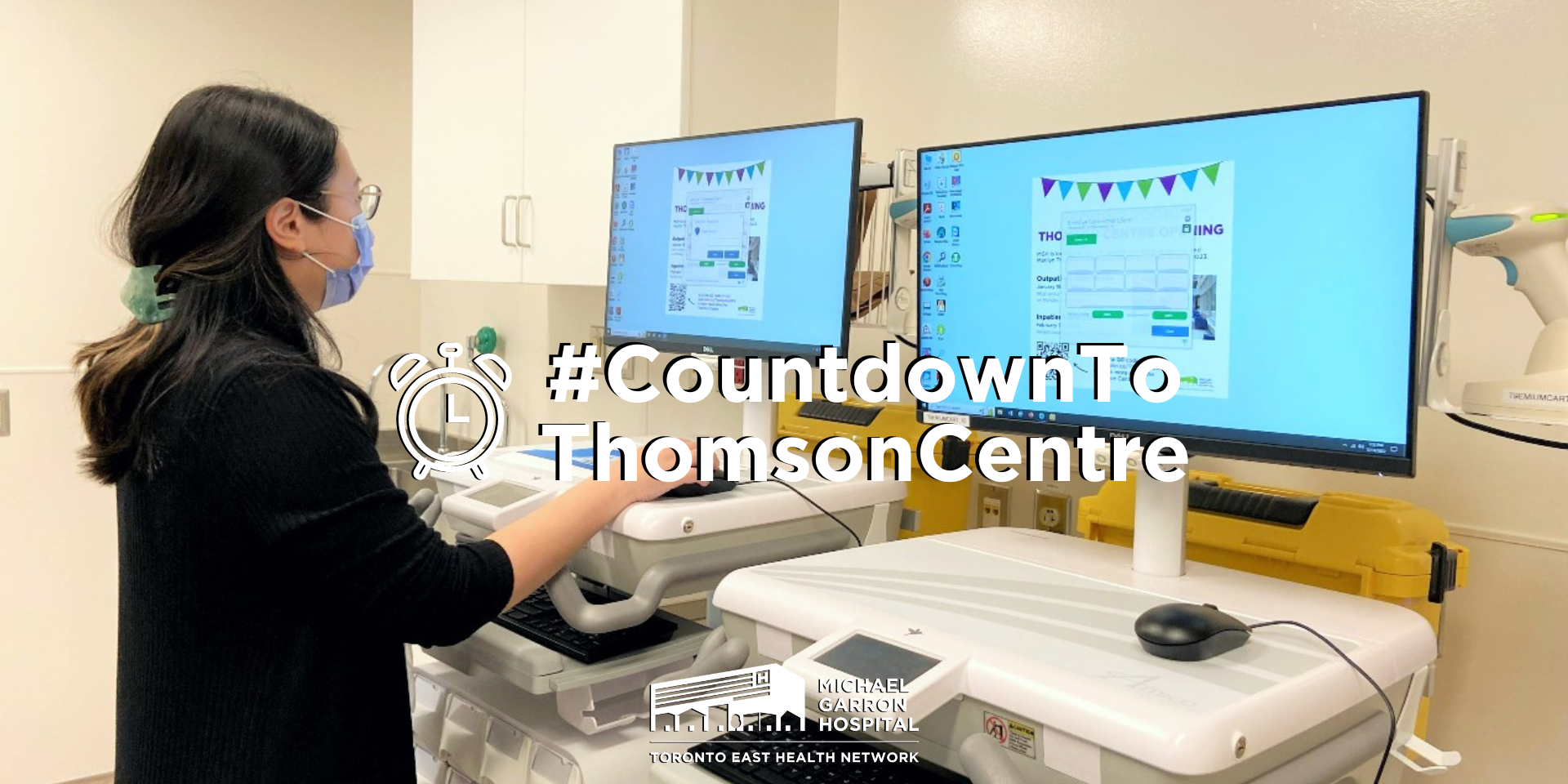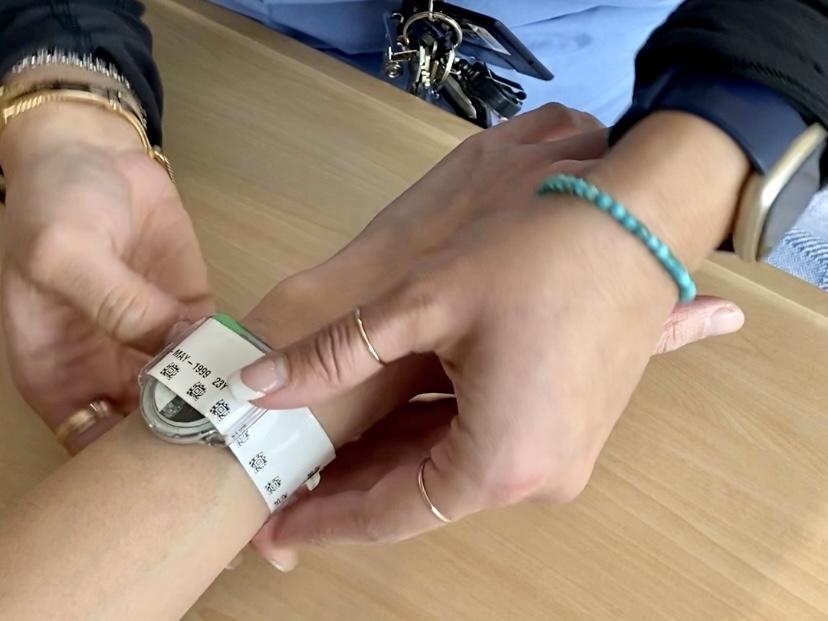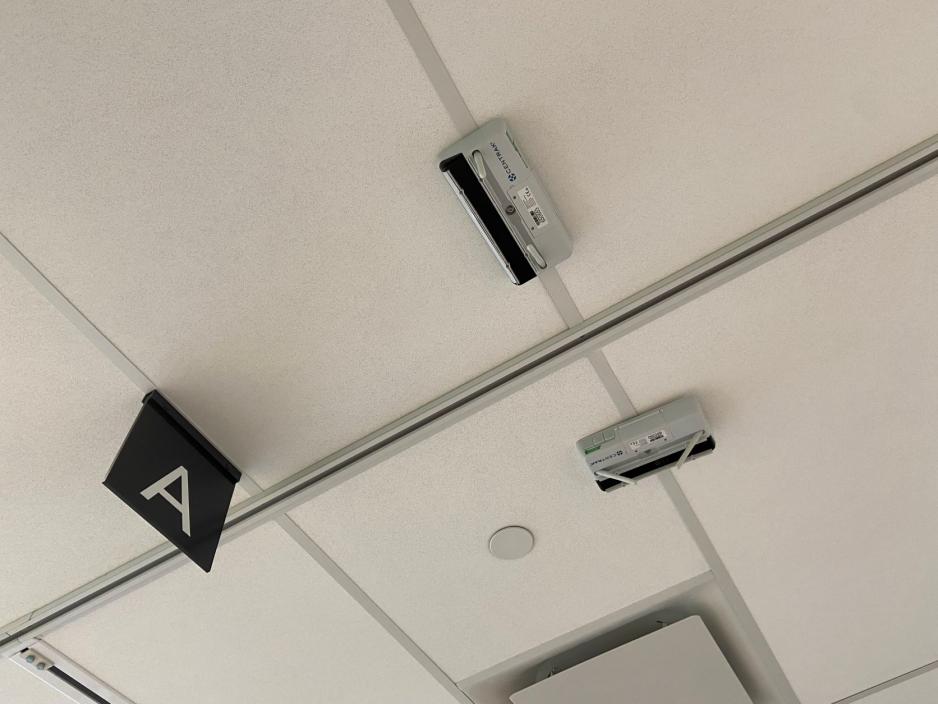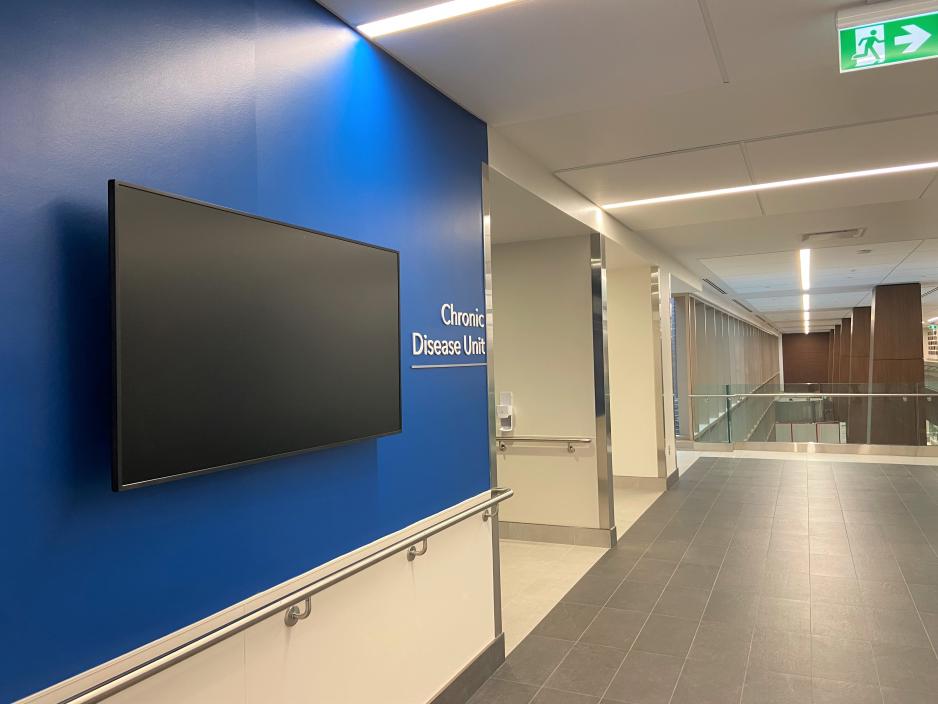#CountdownToThomsonCentre shares the features of Michael Garron Hospital’s (MGH) new Ken and Marilyn Thomson Patient Care Centre, also known as the Thomson Centre, which opens to patients, families and caregivers on January 23, 2023. Follow along as we count down to the opening by marking different milestones and highlighting the ways the Thomson Centre helps improve the care MGH provides the community!
This week, we’re highlighting the new technology and integrations in the Thomson Centre.
With the opening of the new Thomson Centre, MGH is launching many technologies across the hospital that will help improve the care experience for patients, caregivers, visitors and staff.
Some of these technologies will be introduced at the Thomson Centre this winter and rolled out to MGH’s remaining campus later. Other technologies will be introduced at both the Thomson Centre and the existing hospital campus at the same time this winter.
We have integrated our new and existing technologies as much as possible so they “speak” to one another. This helps make patient care more efficient across the entire hospital.
The new technology and integration features include:
Safety bracelets for patients at high risk of wandering
With consent, patients at high risk of wandering will be given a bracelet that sends signals to ceiling-mounted monitors installed around the Thomson Centre.
The monitors are part of MGH’s new real-time location system (RTLS).
If the patient attempts to leave secured areas of the building, staff receive an alert which prevents the patient from wandering and potentially entering an unsafe situation.
Staff duress badges
In an emergency, staff will be able to easily call for help by pressing a button on a badge attached to a lanyard.
The badge sends signals to the ceiling-mounted monitors as part of the RTLS.
This helps MGH’s Protection Services team quickly and accurately locate the staff member if they need assistance.
Medical equipment tracking
Tags will be attached to high-value medical equipment, like portable ultrasound machines, so staff can easily locate these items at any time.
The tags send signals to ceiling-mounted monitors, which allows staff to see their locations through the RTLS software.
Enhanced infection prevention and control
The new RTLS technology will also make it easier for MGH’s Infection Prevention and Control (IPAC) team to contact trace in cases of infection or outbreak.
This is because the IPAC team will be able to use data available through the software to determine which patients may have been exposed to an infection.
In addition, the RTLS will streamline the documentation of hand hygiene compliance among staff, credentialed clinicians and learners.
Automatic dispensing units (ADUs)
These are locked, automated cabinets that provide secure medication storage and safely dispense medication for staff to deliver to patients.
ADUs will be installed in the Thomson Centre upon the building’s opening. They will be rolled out in clinical units on MGH’s existing campus in 2024.
Features like fingerprint recognition, integrated log-in and remote queueing means our teams will be able to more safely and efficiently dispense medications for patients.
This improved automation will also streamline the manual workload for staff.
Medication carts
The ADUs will also help staff stock medication carts across the hospital in a safe and efficient manner.
Medication carts are used across MGH to transport medications to different areas, including patient rooms.
They come equipped with locking drawers and a computer and barcode scanner, which help staff access patient information and deliver medications.
Many teams collaborate to ensure these carts function, including Pharmacy, Patient Access Services, Information Technology and others.
Although medication carts are not new at MGH, the opening of the Thomson Centre gives our teams the opportunity to replace medication carts that are nearing end of life and to ensure newer models are rolled out across the hospital.
Mobile devices for frontline staff
Staff in the Thomson Centre will carry mobile devices during their shift that are equipped with various apps that make communication across the hospital more efficient.
These apps will enable staff to communicate with their colleagues through secure text messages.
In addition, the mobile devices will deliver notifications and alarms, such as medical codes and when a colleague needs assistance.
Another app will allow Support Services staff, such as environmental aides and porters, to more easily and efficiently respond to requests from teams across the hospital.
Electronic whiteboards
Electronic whiteboards are digital screens that are integrated with the hospital’s electronic health record system and other information systems.
They display important patient information that is updated in real-time at team stations and other areas at MGH where staff collaborate.
This allows staff to more quickly and easily see data like where a patient is located in a unit, the next steps in a patient’s care journey and whether a new patient will soon be transferred to a unit.
With this continuously updated information available at a glance, our interdisciplinary teams will be able to work together and coordinate patient care more effectively.
The whiteboards will also save our teams time because individuals no longer need to update manual or “traditional” whiteboards by hand.
Although electronic whiteboards are not new at MGH, the opening of the Thomson Centre gives our teams the opportunity to roll out whiteboards with greater capabilities in additional units.
Digital display screens
The Thomson Centre will have more than 100 digital display screens.
Some of these screens will be installed in staff areas like team stations and meeting rooms, where they’ll be used as electronic whiteboards and for activities like presentations.
Other screens will be installed in patient and family lounges, waiting areas, elevator lobbies and dining and seating areas.
These screens will display content developed in consultation with MGH’s Patient Experience Panel to help ensure the information and imagery is suitable for the hospital’s patients, caregivers, visitors and community members.
Technology and integration features that will later be introduced to the Thomson Centre and wider hospital campus include:
- Self-serve registration options, including a smartphone app and self-serve kiosks, which will allow patients to more easily and conveniently register for in-person appointments
- A queue management system that will make the line-up process more organized and efficient in our patient registration area
- Wayfinding kiosks, which will help patients, caregivers and visitors more easily find directions to where they need to go in the hospital
Take a look at MGH’s new technology and integrations in the Thomson Centre and beyond in the video below!
Want to learn more about MGH’s new Ken and Marilyn Thomson Patient Care Centre? Check out other stories in our #CountdownToThomsonCentre series.




